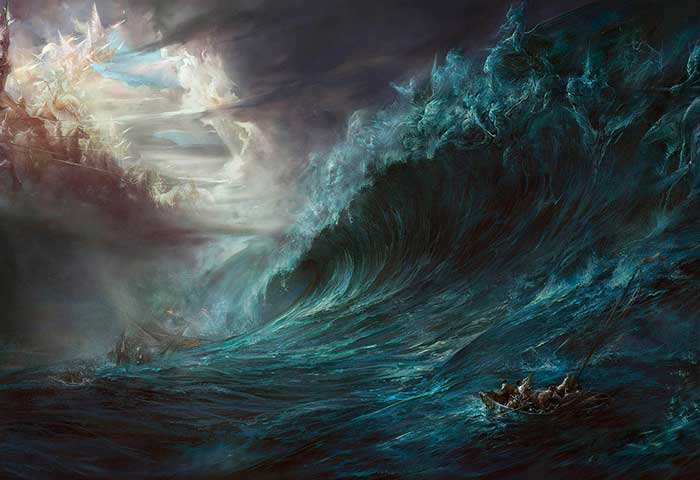[ad_1]
A mixing surface is often called a palette. This same term also refers to the collection of colors a particular artist uses to create his or her paintings. In this article we will be talking about the actual mixing surfaces.
A palette is the mixing surface onto which you squeeze your paintings. It's easy to make your own, or you can buy one. The standard palette is made of hardwood and is oval in form, typically with a hole carved out to accommodate the thumb.
Oval palettes are favored by artists who like to hold their palette while they paint.
However, other artists find holding a palette awkward and messy. So, if you want to keep both hands free, almost any flat surface will do. Plastic and turpentine do not mix, however, so make sure your palette is not plastic.
You can use a plate, cookie sheet, tile, or board. Some artists like to work on slabs of transparent or opaque glass backed with a middle-value gray paper. Glass and porcelain palettes are the easiest to clean but are also breakable.
If you paint only once a week or even less frequently, a disposable palette may be your best choice. These palettes come in sheets of oil-proof paper. When you complete a painting session, simply tear off the used sheet and throw it away.
Many artists like their palette to be a neutral color, either wood with its natural color, or some other surface painted brown or gray. If you prefer, paint your palette white. If you are a beginner, you will find it easier to mix colors on a white ground, since the canvas is also white. On the other hand, neutral grounds can make it easier to gauge values.
When you are working on location, a palette that fits into your painting box is convenient. In the studio, choose the largest comfortable size to give you as much mixing area as possible.
To hold turpentine and your painting medium while you paint, you will need palette cups, which are called dippers. These are small cups that clip onto your palette. Many varieties are available. There are single-cup styles and double-cup styles, with and without covers. All are designed to fit tightly onto the edge of the palette.
Avoid very small dippers because large brushes will not fit into them. And be sure that the size you choose will fit into your painting box. If you hold your palette, no doubt you will want covered dippers. Covers are also great if you want to keep your painting medium fresh from one painting session to the next.
Dippers quickly become sticky and dirty, and they are hard to clean. If you do not hold your palette, they need not clip onto it, so you can easily make your own. Try using small tin cans. Wash them thoroughly before using them, and then throw them out when they become dirty of too sticky.
As you paint, you will often want to clean your brush with turpentine or mineral spirits. If you use water soluble paints you need of course to use water. You can buy special jars available at any art supply store or on the Internet. However, you can also easily make your own.
Take a small tin can, clean it, and then punch holes into its bottom with hammer and nail. Place the can inside a wide jar with the bottom facing upward. Next, fill the jar with cleaning solvent. When you dip a dirty brush into the solvent the paint will fall through the holes in the can and will remain at the bottom of the jar, keeping the solvent relatively clean.
This information should be more than enough to give you a good start with palettes, dippers, and jars.
[ad_2]
Source

